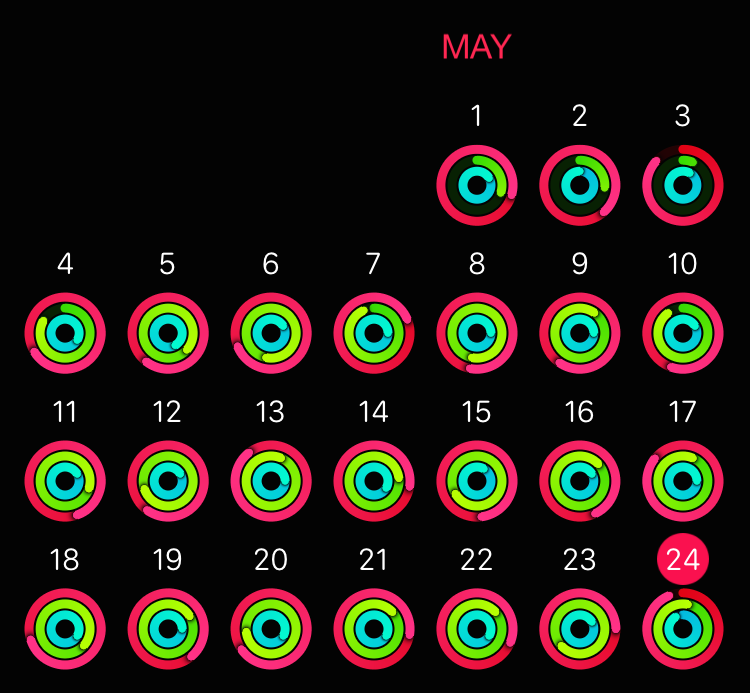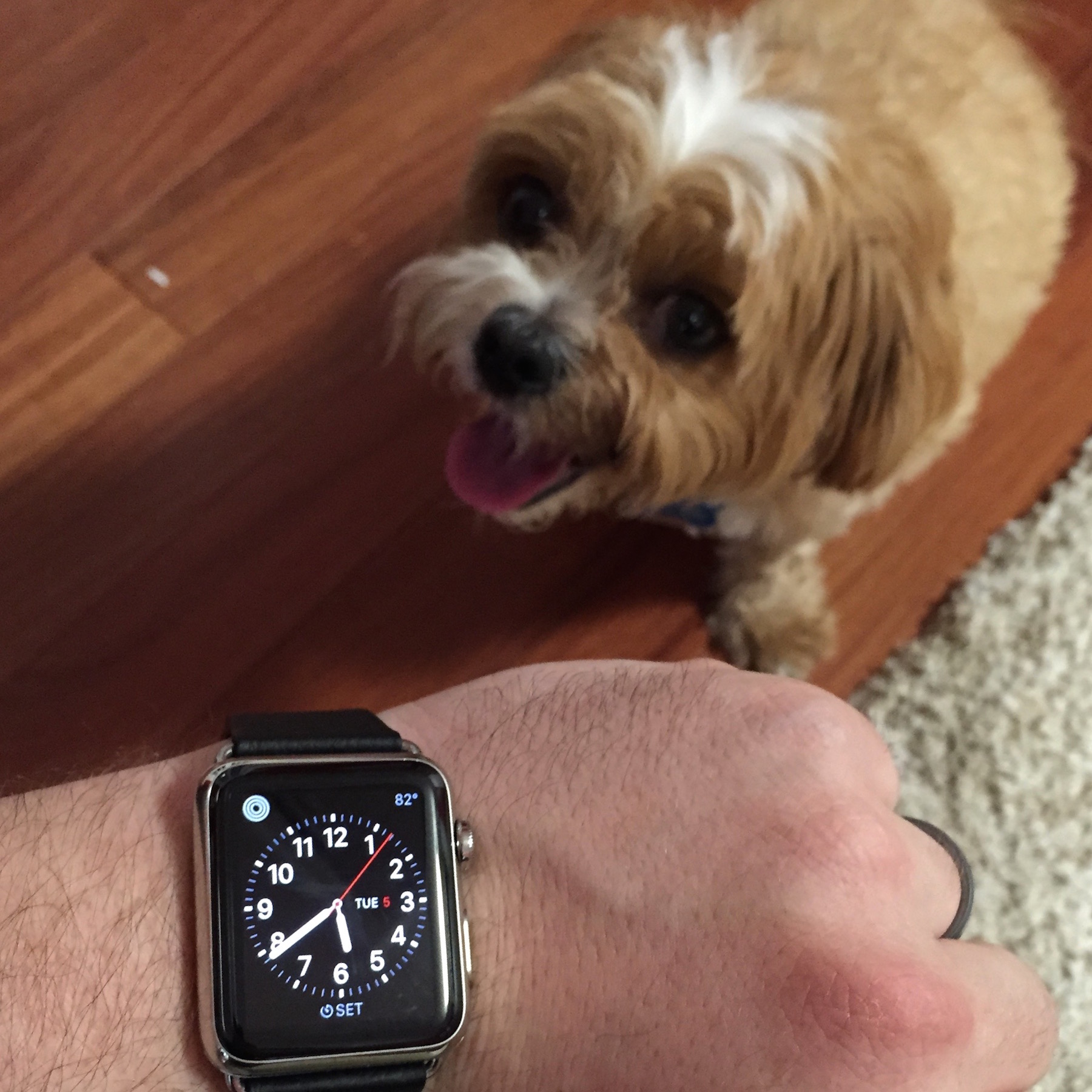Filling the Green Circle
I’m traveling this weekend, and I’ve been doing something I’ve never done: I’ve been using the hotel’s gym. Any Apple Watch owners can probably guess why: I have a good run going on my daily Activity circles, and I want to keep it going.

What I’m doing barely counts as exercise: I’m walking quickly up simulated hills on a treadmill, emulating my big dog walks at home. This is the only exercise I regularly get, but I used to be a lot less consistent.
Ever since getting the Apple Watch, not only have I been getting more consistent exercise, but I’m pushing myself further. I take more walks, and I walk faster and further than ever before. I’ve been walking Hops around the same streets for four years, but now I’ve been discovering new streets and paths just to extend our walking distance and try to beat my previous walks.
I’ve never cared before, but now, I care.

(Set the Activity circles as an always-visible feature of your Apple Watch face. Trust me.)
It’s hard to say a gadget makes you healthier. This is working for me because I’ve wanted to lose some weight anyway, the springtime weather is beautiful, and I really like my shiny new watch.
The big question, like any positive change in diet or exercise, is whether I’ll stick with it. I don’t expect to fill all three circles every day, especially in challenging situations like travel or winter. But I’m so motivated that I used a hotel gym, in jeans, because I know I won’t fill the green circle, the hardest one (30 minutes of activity with an elevated heart rate), in my normal activities today.
When I get a standing reminder (50 minutes after the hour if you haven’t stood yet during that hour) to help fill the blue circle (12 hours that included some standing motion), I usually find a good excuse to get up for a few minutes, even if it’s just to get a drink or wash the dishes at home.
And the active-calories circle (calories used in movement) set such a low default goal for me that I substantially raised it after only a few days, and I have so little trouble filling it that I’m going to raise it again.
The more I use it, the more I appreciate that the Apple Watch’s activity-tracking features are impeccably designed for effectiveness and encouragement.
There are other activity trackers, but a watch face is a perfect place for one: it has physical access to relevant biometrics and motion, it’s typically worn every day, and it’s checked regularly throughout the day so your progress toward goals is easily visible — satisfying if met, and encouraging if not (and you know before it’s too late). I don’t even want to spend much time awake without wearing the Watch because I want my activity to be counted.
I think the chances of this sticking long-term are higher than most fitness gadgets. The default goals are just achievable enough that most people leading normal lives can fill up most of the circles every day, but to fill them all, every day, mostly-inactive people (like me) need to add a small amount of light physical activity to their daily lives.
The goals are reasonable enough not to be discouraging, but significant enough that I need to make small, positive changes to reach them. None of them will bring me flawless fitness and health on their own, but all of them are subtle improvements in the right direction.
The benefits of this at scale could be huge: consider the net improvement of millions of Apple Watch owners making small improvements to their health.
The Watch is Tim Cook’s product. And in the perfect Tim Cook way — subtle, understated, but incredibly powerful — he’s improving the world.